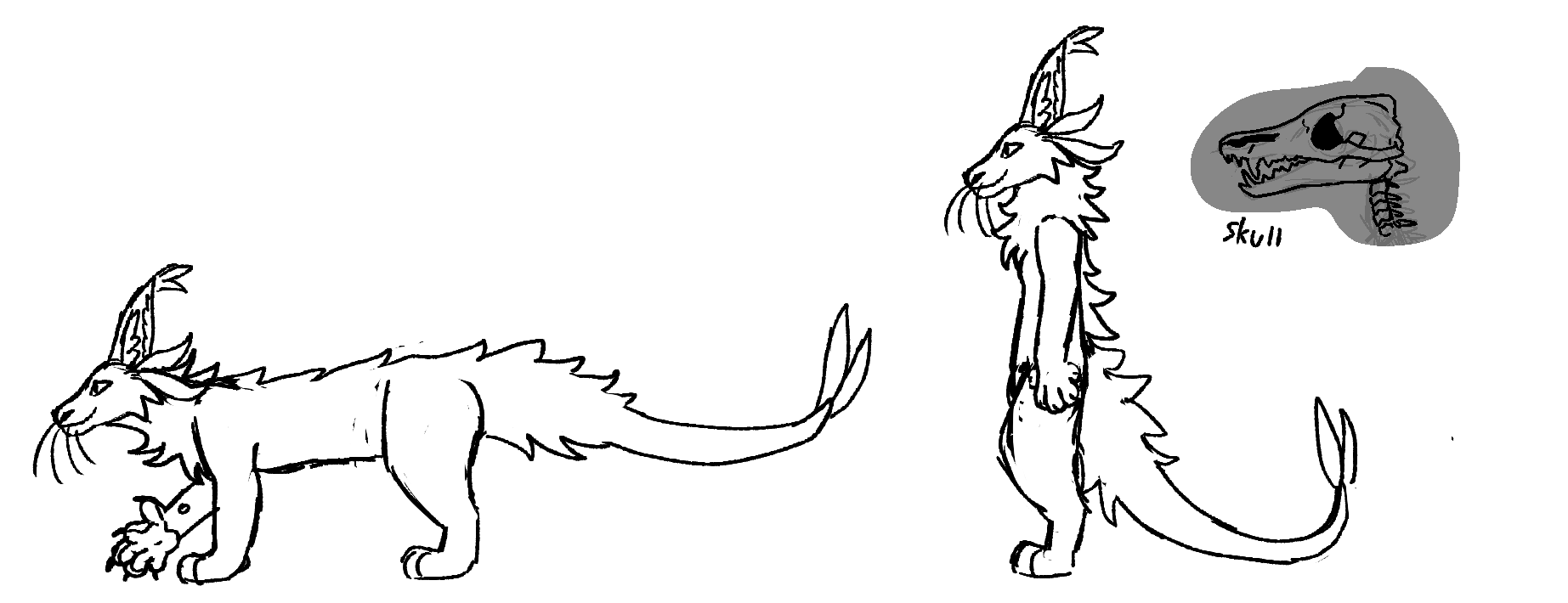Ceeruls species page
Ceeruls are predominantly arboreal mammals with sharp claws and teeth for arboreal hunting, and thick whiskers on their head, palms and tailtip. some whiskers resemble leaves.
Biome range
They are predominantly found in lush tropical rainforests with thick vegetation, but are highly adaptive to most biomes. Variants or ceeruls can be found in chilly tundras, flooded swamps and open grasslands.
Morphology
They are both bipedal and quadrupedal. The use of either posture is often influenced by culture, some colonies walking predominantly on their hind legs while others are strictly quadrupedal. When not influenced by culture, the majority do prefer to walk and especially climb on all fours as it feels more natural to them.

Their hind legs work similarly to fossas, with a flexible back leg ankle and retractable claws. They also have serrated sharp teeth made for cutting through flesh. In tropical environments their fur is mostly sleek and thin with the exception of their manes. The size of which varies by individual, few even lack it altogether. Their thick leaf-shaped whiskers are positioned on their cheeks and tail tip and are used for feeling in dark, dim, and cramped environments like caves or thick canopy at night. Their tails are highly flexible and long, they are also prehensile.
The most distinct species of ceerul is the arctic ceerul. To adapt to the harsh tundras they lose most of their climbing adaptations such as the ankle mobility, retractable claws, and prehensile tail. Instead, they have large front claws akin to a bear's, thick fur, and broader jaws. Rainforest ceeruls are more alike to fossas, while arctic ceeruls go for a more bear-like build.
Section A
I'm the collapsible set content for section B.
Section B
I'm the collapsible set content for section B.